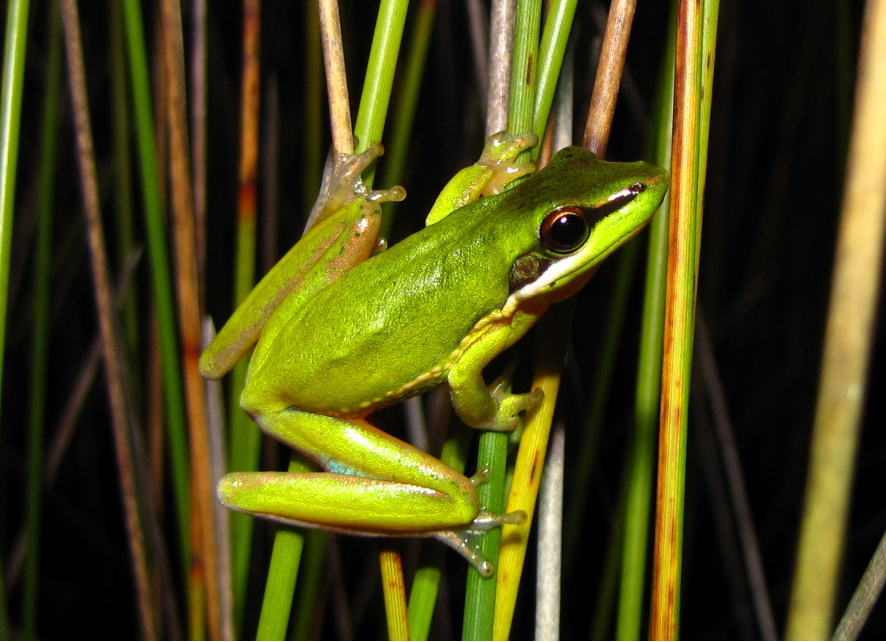Wallum frogs are specialist frog species that live in coastal wallum habitats of eastern Australia. They are unique in that they are able to live and breed in naturally highly acidic wetlands, typically pH 3.0 – 5.0, and include four species: the wallum sedge frog (Litoria olongburensis), the Cooloola sedge frog (L. cooloolensis), the wallum rocketfrog (L. freycineti), and wallum froglet (Crinia tinnula).
Wallum frogs are restricted to coastal wallum habitats which are characterised by freshwater coastal foredune swamps, lagoon systems and associated vegetation communities occurring on low nutrient sandy soils of eastern Australia. Some wallum vegetation communities include Banksia heathland, scrub land, Melaleuca swamp, sedgeland and woodland occurring between Shoalwater Bay in Queensland and Newcastle in New South Wales, Australia.
Wallum vegetation was historically more common but vanished into the sea as the sea level rose since the last ice age, leading to wallum frog populations becoming isolated. Since European settlement much of the remaining wallum has been cleared, modified, and substantially fragmented. A large proportion of the remaining wallum frog habitat is in protected areas, with some wetlands of global significance as RAMSAR sites, but many non-protected areas are threatened by coastal development.
All species are variously listed as threatened under state and federal legislation. Both C. tinnula and L. olongburensis are listed as vulnerable under both the Environment Protection and Biodiversity Conservation Act 1999 (EPBC Act) and Nature Conservation Act 1992 (NC Act). Litoria freycineti and L. cooloolensis are both listed under the NC Act only, as vulnerable and near threatened, respectively. All species are listed as vulnerable by the International Union for the Conservation of Nature (IUCN), except for L. cooloolensis listed as endangered.
Wallum frogs are highly sensitive to habitat modification and intrusion by more common frog species, such as Litoria fallax, and exotic predators, such as mosquitofish (Gambusia). Because of their coastal distribution, niche habitat requirements, and sensitivity, it is important to minimise any disturbance to remaining populations. In optimal habitat, however, populations can be quite abundant and resilient to natural processes of the wallum, such as fire.
Continued pressure for coastal development is the greatest threat to wallum frogs. As well as clearing habitat, changes to hydrology regimes, increased nutrients or sediments (from storm water, sewage, and agricultural run-off), weed invasion, inappropriate fire regimes and predation from introduced fish all threaten current wallum frog populations. Climate change impacts such as increased hot fires, drought, and sea level rise also pose threats to wallum frogs. Recreating habitat can be extremely difficult and disturbing wetlands with intact hydrology should be avoided. Protecting remaining wallum frog habitat, particularly with habitat connectivity and appropriate hydrology, is essential for the longevity of these species.
Photos by Katrin Lowe
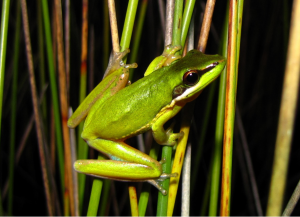
Wallum sedge frog (Litoria olongburensis)
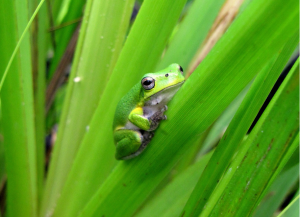
Cooloola sedge frog (L. cooloolensis)
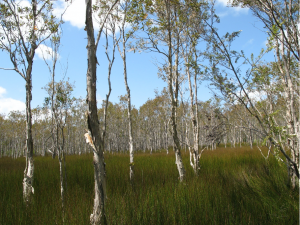
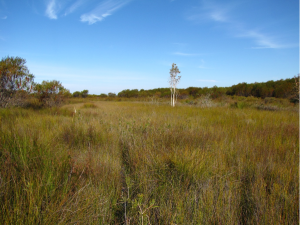
Wallum frog habitat
Photos by Dr Con Lokkers

Cooloola sedge frog (L. cooloolensis)
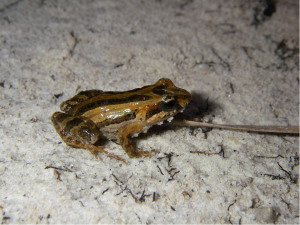
Wallum froglet (Crinia tinnula)
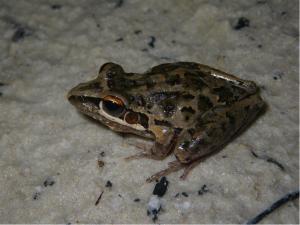
Wallum rocketfrog (Litoria freycineti)

